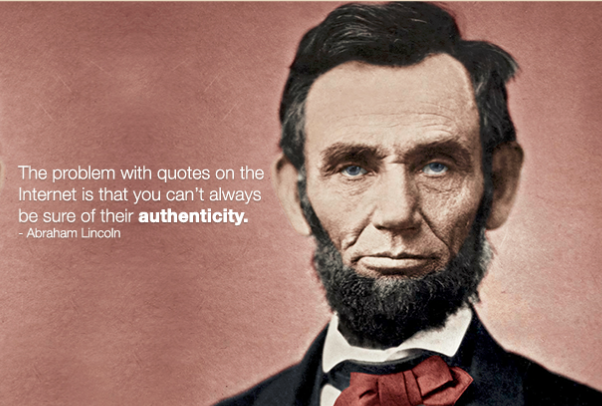By NN, ISB Staff Writer
Fake news is frequently in the news these days – either charges of fake news or real-news stories about fake news. This week offers yet another example.
Does the truth really matter anymore? This is no longer a theoretical question. The term “post-truth” was named the international word of the year by Oxford Dictionaries after the 2016 Brexit campaign and US Presidential Election. Since then, a number of research studies by respected organizations have fleshed out the whys and wherefores.
Following is a practical primer on fake news and what readers can do about it. This primer contains many links to reduce verbiage and to help readers focus on what matters to them and stay current on related research.

What is fake news?
News is fake when it is presented as objective journalism, but hides deliberate false information in some part of its headline, reportage, data, selective quotes, photos or attached websites. In short, fake news contains outright lies and is intended to promote the writer’s agenda. For example, thousands of people believed the fake news that Pope Francis endorsed candidate Trump although Trump’s public comments in 2016 contradicted the Pope’s consistent values and comments since being named pope in 2013. The writer’s agenda was to use a credible reference (the pope) to help elect candidate Trump.
Why does fake news matter?
Fake news has real consequences in three basic areas of life on a personal and societal level:
- Readers use news to form opinions and make decisions that translate into actions ranging from voting on issues and candidates to even committing
- The proliferation of fake news has shattered social norms as if the convention of truthful communication does not exist anymore, especially when exaggerations, distortions or lies come from the US President.
- A healthy democracy depends on citizens being well-informed which includes having access to credible news that is accurate, fair and puts information into context – as written in the First Amendment.
Is fake news a recent phenomenon?
No, but it has gotten significantly worse in recent years. Documented fake news has been around since at least the 1st century when the Roman general Octavian used it against Mark Antony. It has been part of American politics since the founding, but its influence has significantly increased due to the swift speed of communicating on the internet, especially through social media. A recent study showed that nearly a quarter of Americans said they have forwarded a fake news story either knowingly or not. As a result, the impact of fake news can be sudden and broad.
Why do people spread fake news?
The key reasons are they may want to influence public opinion through propaganda, they may be too distracted to think critically, they may be ill-informed and unknowingly send it others, or they may seek to make money, such as detailed in this fake news masterpiece.
Isn’t fake news easy to detect?
Fake news can be difficult to discern if much of the reporting is truthful, the reader is not familiar with the subject or the fake news confirms a personal bias. A recent study by Stanford University researchers showed that even digital tech-savvy students think they can tell the difference, but were often mistaken.
What are the blocks to detecting fake news?
Some major blocks include:
- Narrow-framing, which is a form of limited thinking: For example: “Should I buy a new iPhone?” instead of “Which smart phone would best satisfy my needs or should I get a landline?”
- Confirmation bias, such as seeking information or making assumptions that support one’s beliefs. For example: “My neighbor, a home-builder, said my roof is safe” instead of asking “Where can I find a roofing expert?”
- Short-term emotions, which means being swayed by emotions that may fade. For example: “How distasteful – he has a tattoo on his forehead” and then learning later it’s a birthmark.
- Overconfidence and having too much faith in one’s predictions. For example: “It sounds like a dream job – I accept!” instead of conducting due diligence and considering best and worst case scenarios.
How can I learn how to overcome these blocks?
One respected source is the book “Decisive: How to Make Better Choices in Life and Work” published by Random House, Inc.
Where can I quickly check if news is fake?
Reputable sites (based on their track records) include FactCheck.org, PolitiFact.com, Snopes.com, and OpenSecrets.org. There are also topic-specific fact-checking sites.
How can I detect fake websites?
Readers can check Wikipedia’s list of fake websites and see PolitiFact’s guide to fake websites. Readers can also learn the basic skills of viewing a website. For example, a simple way to check a fake site is to put the name of the site in quotes and search. This will turn up mentions of the real site. Satire and parody differ from fake news because they aim to humor and not deceive or manipulate. Readers can check Wikipedia’s list of satirical news websites.
What else can I do about fake news?
Readers can learn the critical thinking skills of news literacy, which teaches readers to be an active learner rather than a passive recipient of information. News literacy skills include using curiosity to question ideas and assumptions. These skills are so important that they are considered a necessary 21st century skill, especially for the “Internet generation.” As a result, news literacy is now being taught in schools across the country.
What is social media doing to help stop fake news?
Facebook and Google launched Cross Check. In addition, Google launched a fact-checking tool and Facebook offers tips on how to spot fake news. Wikipedia founder Jimmy Wales launched Wikitribune. YouTube, a subsidiary of Google, is also taking measures. Even the Craigslist founder is funding efforts for trustworthy journalism.
What are traditional news organizations doing to stop fake news?
They have partnered with nonprofits and set up their own fact-checking teams. Most importantly, they expose fake news through their daily reporting.
How can I keep current with research on fake news?
One of the most respected and often-cited source is the nonprofit Pew Research Center which includes ongoing research on journalism and media and the internet. It also reports on the annual state of news media. In addition, many of the links in this primer cover the latest research.
